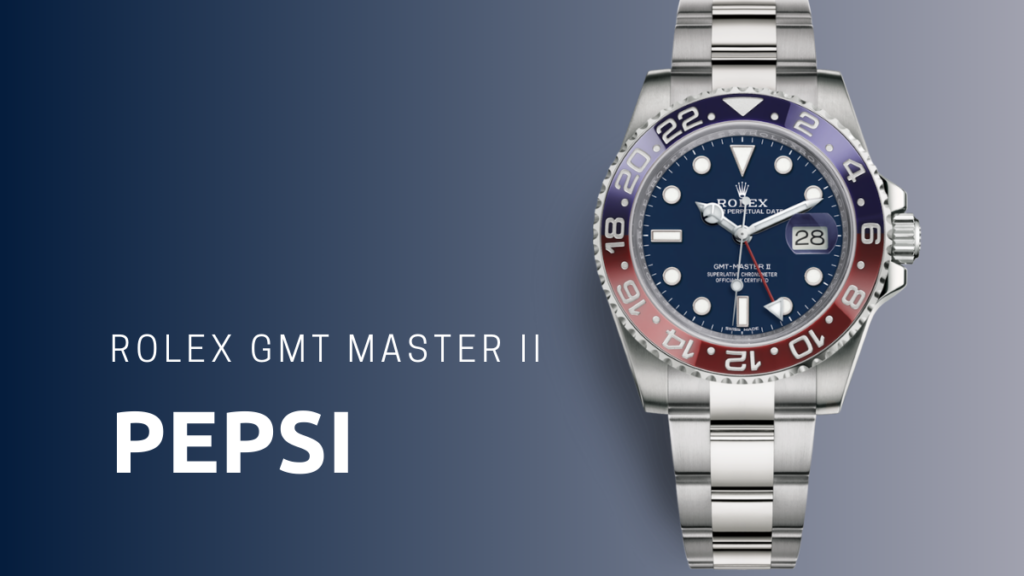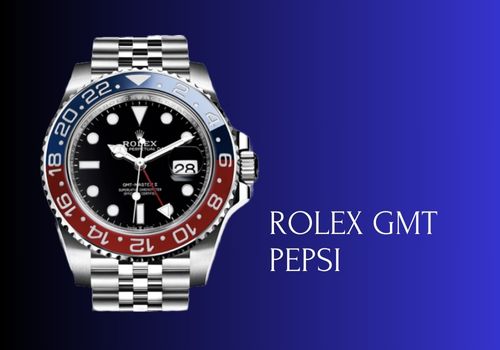ROLEX PEPSI HISTORY
Rolex Pepsi history goes back in the early 1950s, at that period Pan American Airlines best known as Pan Am shared with Rolex the special of its pilots. They wanted a watch that would be able to display two different time zones at the same time when they had a transatlantic flight.
Rolex set out to create a timepiece that would revolutionize the world of aviation and travel. This marked the beginning of an iconic watch known as the Rolex GMT-Master, and one of its most famous variations came to be known as the “Pepsi” due to its distinctive red and blue bezel that looked like the famous soft drink Pepsi.
A Tale between Rolex and Pan Am
It all started due to the special needs of the employees of Pan Am, due toIn 1954, the Rolex Pepsi GMT was launched as the outcome of a specific requirement of Pan Am to Rolex . Rolex collaborated with Pan American World Airways in order to create a watch that would be especially designed for the needs of the pilots transiting in different time zones as well as tracking time during long-haul flights. The first GMT-Master was launched featuring a red and blue bi-colored bezel made from Bakelite and quickly replaced by anodised aluminum.

The colors that were chosen in order to represent the day and night hours on the watch, making it easier for pilots to differentiate between those two. The “Pepsi” nickname was given due to the blue and red GMT-Master bezels(ref. 6542) launched in 1955 that reflected the colours of the logo of one of the most well known soft drink globally PEPSI.
Over the years, the GMT-Master Pepsi became highly popular among watch enthusiasts and collectors worldwide. The watch embodied the perfect blend of functionality, style, and luxury. Its robust construction, reliable movement, and distinctive design made it an instant hit among professionals and adventurers alike.
ROLEX PESPI: Technological Advancements and Modernization
Throughout its history, the Rolex GMT-Master Pepsi went through several updates and improvements. In the late 1950s, Rolex replaced the aluminum bezel with a more durable one made of Bakelite. However, due to its tendency to crack and fade over time, Rolex transitioned to using aluminum inserts for the bezel in the 1960s.
In the 1980s, Rolex introduced a new reference, the GMT-Master II, featuring an enhanced movement and a more modern appearance. This version allowed for independent adjustments of the hour hand, making it even more convenient for frequent travelers.
In 2014, Rolex unveiled a new iteration of the GMT-Master II Pepsi at Baselworld, the world’s largest watch and jewelry fair. This model, reference 116719BLRO, brought significant updates to the iconic timepiece. It introduced a ceramic bezel, which offered enhanced scratch resistance and vibrant colors that stayed true for years to come. The Pepsi bezel now featured patented Cerachrom technology, which allowed for the creation of the iconic red and blue ceramic bezel.
ROLEX PESPI: The Enduring Appeal of legacy
The GMT-Master II Pepsi continues to captivate watch enthusiasts with its timeless design, exceptional craftsmanship, and technical prowess. It represents the enduring legacy of Rolex as a pioneer in the world of horology and a symbol of luxury and precision. It is a watch that many celebrities wore and it stands out due to its unique combination of red and blue colors.
Today, the Rolex Pepsi GMT-Master II remains a highly coveted and iconic timepiece, with its rich history and distinctive aesthetics continuing to make it a favorite among watch collectors and enthusiasts worldwide.
Want to learn more about Rolex History? Check out our article that describes how everything started.
Feel free to contact and share your thoughts with us your feedback is important as we are trying to create a unique interactive community for all the watch fanatics.

